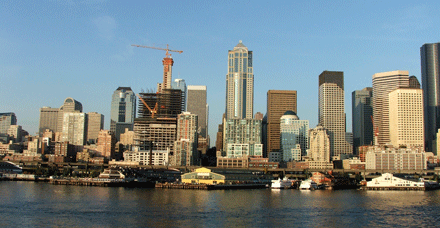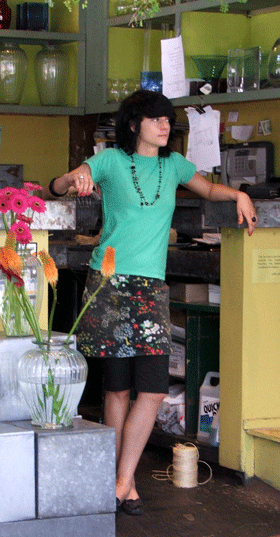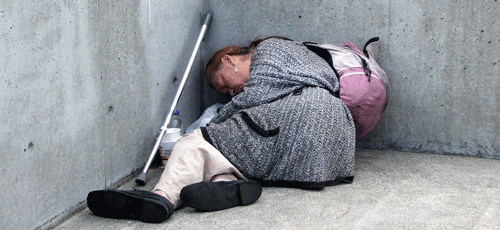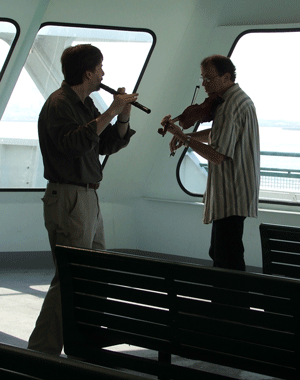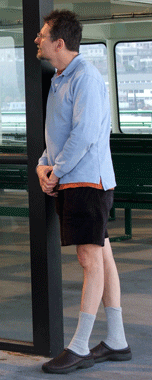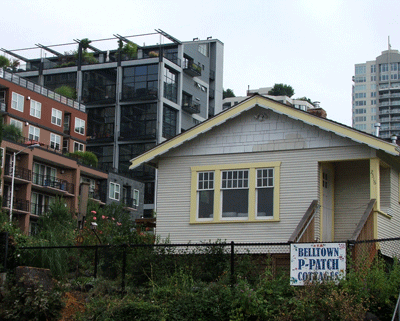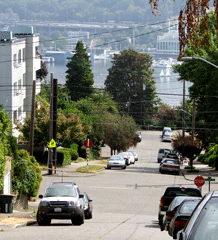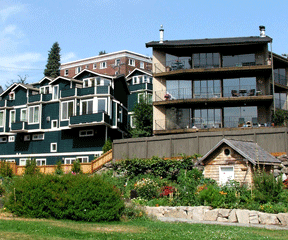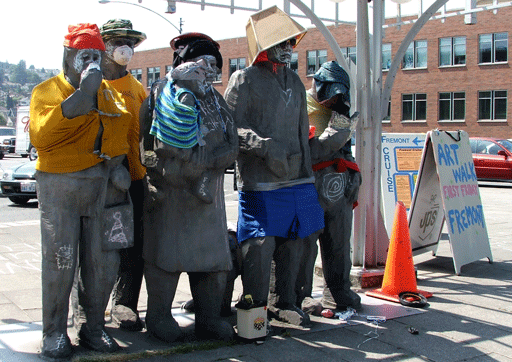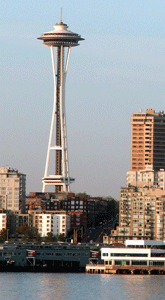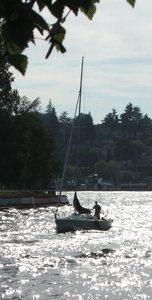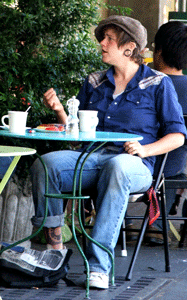|
In any case, I bypassed the Seattle Center and headed up Queen Anne Hill, a steep hike through a quiet neighborhood of single family homes and small apartment buildings. Iím sure that parts of the hill are home to wealthy people in huge old houses with sweeping views of the water, but where I was seemed pretty middle-class. I was only on residential streets; I donít know where folks bought their groceries or took their dry-cleaning. It was nice, reasonably pretty, and fairly uninteresting. If I moved to Seattle, I donít think Iíd live here. Belltown is more likely, because itís more urban, less family-oriented, and closer to downtown. Besides, getting up Queen Anne Hill on a bike is a daunting thought.
My destination was Fremont, which a number of people had told me I would like. Itís supposed to be funky, artsy, full of great spots to hang out and cool people. Or something like that. I guess I didnít see enough of it, though, because I didnít catch its charm. Or maybe Iíve looked at too many places, and they all start to fall into types. I walked down a few streets in Fremont and saw lots of restaurants, an arts cooperative selling pretty and expensive things, an import store selling Indian clothes, beads, incense, African crafts, Balinese painted wooden creatures hanging from the ceiling, and the like. I thought that kind of store had gone out |
|
|
|
with the sixties, but Iíve seen quite a few in the Pacific Northwest. There were a few coffee houses Ė including a Starbucks, of course Ė and a few bars. It seemed like one more neighborhood to classify. I no longer see them as unique.
Perhaps I need a new way to get a sense of place. Or perhaps place doesnít matter that all much. Anywhere I go, Iím likely to find some people like me Ė liberal, educated, urban. Well, okay, maybe not anywhere Ė I donít know that Iíd find people like me in Mitchell, South Dakota. But I do seem to find them in any sizeable city. If I take out ďurban,Ē I meet them every where else, too Ė in national parks, in small-town red-state used bookstores, in coffee houses. In any city of reasonable size Iíll find the kinds of stores I want Ė good coffee, yuppie groceries, an acceptable assortment of pretty things, used books. Iíll also find the other kind of stores I want, the functional ones Ė big suburban supermarkets, Home Depot, Borders or Barnes & Noble, Vanagon mechanics, auto parts stores, bike repair shops. Iíll find some ethnic neighborhoods where I can get Asian groceries, pho, Indian food, and maybe if Iím lucky Ethiopian or El Salvadoran food as well.
Perhaps when I want to settle down, figuring out where wonít be an issue. Iíll pick a place for a job, or for a person, or for some exceptional opportunity of another sort. Or perhaps Iíll just be someplace and decide I want to stop, so I will, wherever I happen to be. And once Iím there Iíll find the parts of the community that I like, and get to know the parts that I wouldnít have thought Iíd like. Perhaps I should stop looking at places from the perspective of what my life would be there, and instead just look at them for what they are, on their terms. Iím not exactly sure what that means, but it sounds good!
|
